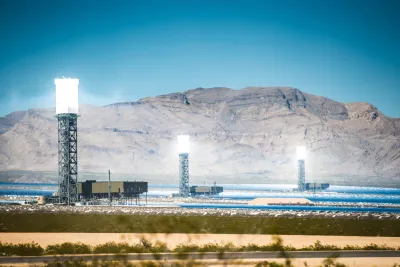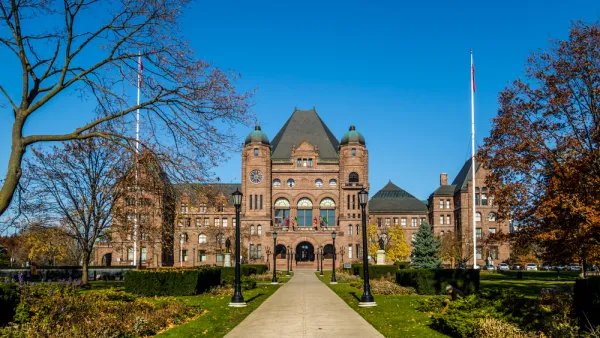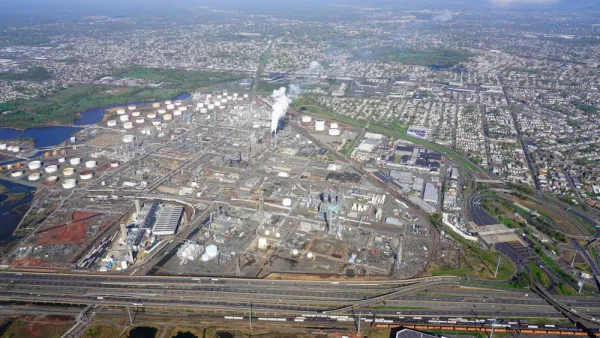A California state senator has proposed to overhaul California’s cap-and-trade system explains the changes he wants to see.

California successfully defended its cap-and-trade program from a recent legal challenge, but it still has to wrestle with what will happen when the program expires in 2020—especially since the state emissions reduction target extends to 2030.
One proposal, from Senator Bob Wieckowski, is to essentially replace the current system with a new version of cap and trade that would change both how carbon is priced and how the revenues are spent. In The Planning Report, Wieckowski describes the three broad categories of investment his plan would create: climate research, infrastructure adaptation, and a new consumer program called "climate dividends."
"When we set a cap, there is necessarily going to be an increase in the price of gasoline and carbon-based products," he explains. "The idea is to return some of the money generated to the consumer, to ease the increased direct costs that we anticipate."
He also wants to see the state's investment in infrastructure shift to prioritize the upgrade or even relocation of basic facilities like sewers and roads, especially in disadvantaged communities.
Some of these facilities are located in areas that are endangered by sea-level rise and climate change. As we rebuild them, it may not be possible to simply fortify the surrounding ground. They may actually have to be moved to, for lack of a better term, higher ground. That’s quite a change from how we’re using cap-and-trade funds right now.
New technologies and innovations, meanwhile, would be explored through a third bucket of money dedicated to researching best climate adaptation practices. That approach speaks to Wieckowski's broader vision of where California fits into the global effort toward resilience.
"California's forte is the export of problem-solving ideas and devices that can help out the rest of the world," he says. Especially in light of the Trump administration's "disinterest" in climate action, he says, "People are looking for answers from us. How California goes, the world wants to go."
FULL STORY: State Senator Wieckowski Offers Alternative to Post-2020 Cap and Trade

National Parks Layoffs Will Cause Communities to Lose Billions
Thousands of essential park workers were laid off this week, just before the busy spring break season.

Retro-silient?: America’s First “Eco-burb,” The Woodlands Turns 50
A master-planned community north of Houston offers lessons on green infrastructure and resilient design, but falls short of its founder’s lofty affordability and walkability goals.

Delivering for America Plan Will Downgrade Mail Service in at Least 49.5 Percent of Zip Codes
Republican and Democrat lawmakers criticize the plan for its disproportionate negative impact on rural communities.

Test News Post 1
This is a summary

Test News Headline 46
Test for the image on the front page.

Balancing Bombs and Butterflies: How the National Guard Protects a Rare Species
The National Guard at Fort Indiantown Gap uses GIS technology and land management strategies to balance military training with conservation efforts, ensuring the survival of the rare eastern regal fritillary butterfly.
Urban Design for Planners 1: Software Tools
This six-course series explores essential urban design concepts using open source software and equips planners with the tools they need to participate fully in the urban design process.
Planning for Universal Design
Learn the tools for implementing Universal Design in planning regulations.
EMC Planning Group, Inc.
Planetizen
Planetizen
Mpact (formerly Rail~Volution)
Great Falls Development Authority, Inc.
HUDs Office of Policy Development and Research
NYU Wagner Graduate School of Public Service




























